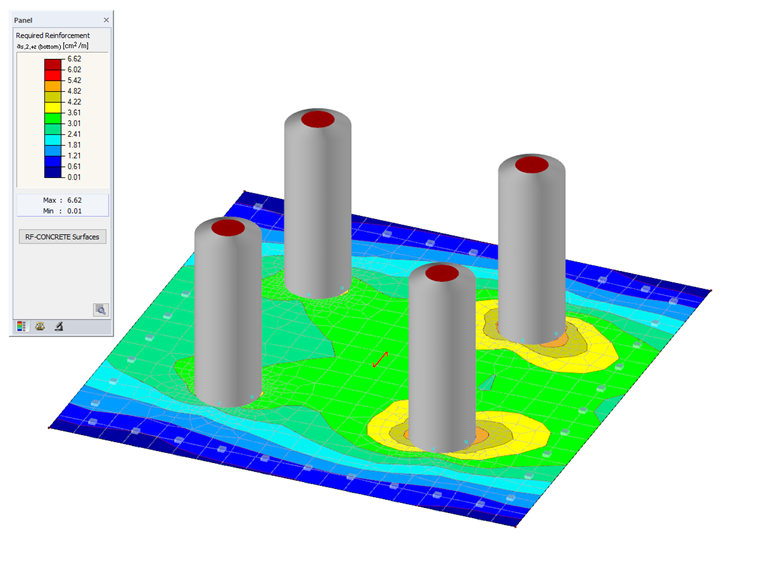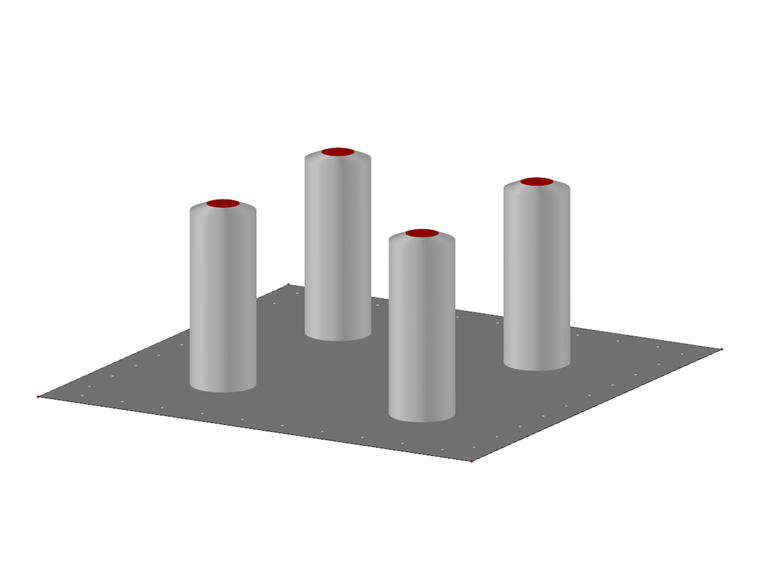The following types of foundations are available:
- Bucket foundation with smooth bucket sides
- Bucket foundation with rough bucket sides
- Foundation plate
- Block foundation with rough bucket sides
In practice, these types of foundations cover a large number of design purposes.
It can happen, however, that you need other foundations with forms deviating from the options provided in RF‑/FOUNDATION Pro. For such special design purposes, RFEM and the available add‑on modules allow you to carry out a viable and cost-efficient design. This is shown here by an example of a foundation that is not covered by the types of foundations available in RF‑/FOUNDATION Pro.
Consider the following exemplary situation: We want to design a foundation for a lattice tower structure. The corner posts of the tower are applied to four bases that protrude from a concrete slab. The loads are specified manually by support forces from the design of the lattice tower structure. The individual load combinations can either be generated by RFEM or created manually.
For designing the foundation plate, we use RF‑CONCRETE Surfaces for the bending design and the crack width check. The rising bases can be designed with RF‑CONCRETE Members. The punching shear design of the individual bases on the plate is carried out with RF‑PUNCH. The geotechnical checks can be performed manually via the output of the existing bearing pressure. With RF‑SOILIN, you can enter the soil parameters from a soil investigation report to determine the foundation coefficients and consider them in the RFEM calculation.
The image above shows the rendering of the modeled foundation plate with rising components, as well as the result values for the lower layer of the bending reinforcement.


